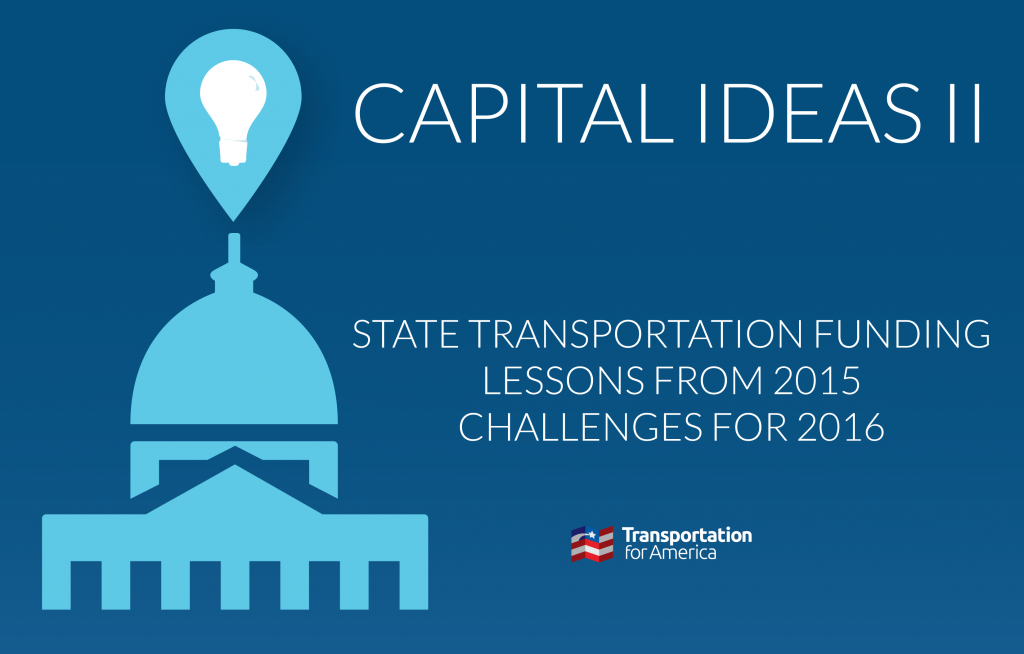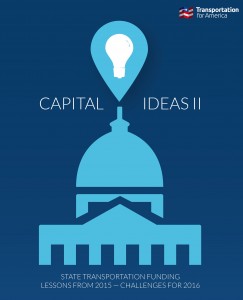
12 states successfully raised new transportation funding in 2015 — what can other states learn?

The second issue of Transportation for America’s “Capital Ideas” series, released today, takes a closer look at the states that passed new transportation funding and policy legislation in 2015, distilling it all into some notable trends, lessons learned, challenges, and recommendations for other states planning similar action in 2016.
After years of inactivity on the issue, transportation funding has increasingly become a priority in states both red and blue. 2015 was a high water mark for the number of states successfully raising new funding, boasting successful increases in 12 states, bringing the total to 23 since 2012.
Along with a big-picture overview of all the states that were successful this year, this short report takes a closer look at a state that passed one of the better overall bills (Utah), a state that suffered a defeat on the way to a final package that failed to fundamentally improve policy or solve the revenue question (Michigan), and a state that passed another round of policy reforms to build voter trust and accountability following an increase in new transportation funds in 2013 (Virginia).
Through the successes (and failures) of 2015, we pull together some practical lessons and challenges for the other states hoping to take up the issue in 2016 or 2017, like showing why instituting reforms to boost public confidence can increase the likelihood of success, why indexing fuel taxes to inflation still isn’t a long-term solution, and why states should still find ways to fund all of the diverse needs in their states — not just highways. (Something that not enough states managed to do this year.)
Many states have an uphill challenge on that last point: did you know that almost half (23) of U.S. states have constitutional restrictions on their fuel taxes that restrict their use to roads or highways only? Those are the kinds of nuggets you can expect in Capital Ideas II.
While 2016 may not be quite as active as 2015 was due to a busy election year ahead, this trend will not abate anytime soon.
Even though Congress did finally pass a five-year bill this year, states are unlikely to stand pat on transportation funding. Years of dwindling federal funding and lost revenues due to arcane, static, and declining gas taxes have left states struggling to balance their budgets, and unlike Congress did recently, states can’t sell future oil reserves, raid the Fed or rely on accounting gimmicks to cover their costs — they have to find real money.
Read the report in full online and stay tuned as we bring you more news about T4America’s work in states in 2016. While we made our name and earned our stripes working at the federal level since our inception more than six years ago, we’ve been doing more work at the state and local level, and we’re eager to tell you more about it in the months ahead.




